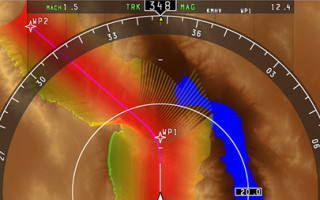NASA teams with Rockwell Collins to demo sonic-boom display
NewsMarch 23, 2017

EDWARDS AIR FORCE BASE, Calif. NASA and Rockwell Collins recently teamed to demonstrate the Sonic Boom Display at the NASA Armstrong Flight Research Center. The usability demonstration and pilot working group meeting marked a major milestone in the two-year project.
The resulting sonic-boom impact visualization will help pilots modify flight plans to reduce sonic boom impacts or mitigate it all together. The joint team leveraged NASA’s cockpit interactive sonic-boom display avionics algorithm and implemented the ability to use a worldwide terrain database to predict where the sonic boom would impact the ground and at what sound-pressure levels.
John Borghese, vice president of the Rockwell Collins Advanced Technology Center, stated: “As a result of this research, we will be able to alleviate noise concerns affiliated with supersonic travel by giving pilots the ability to control boom placement away from populated areas.”
Next steps for the Sonic Boom Display: implementation of a flight-planning and guidance application, in addition to compliance with any defined noise standards.







